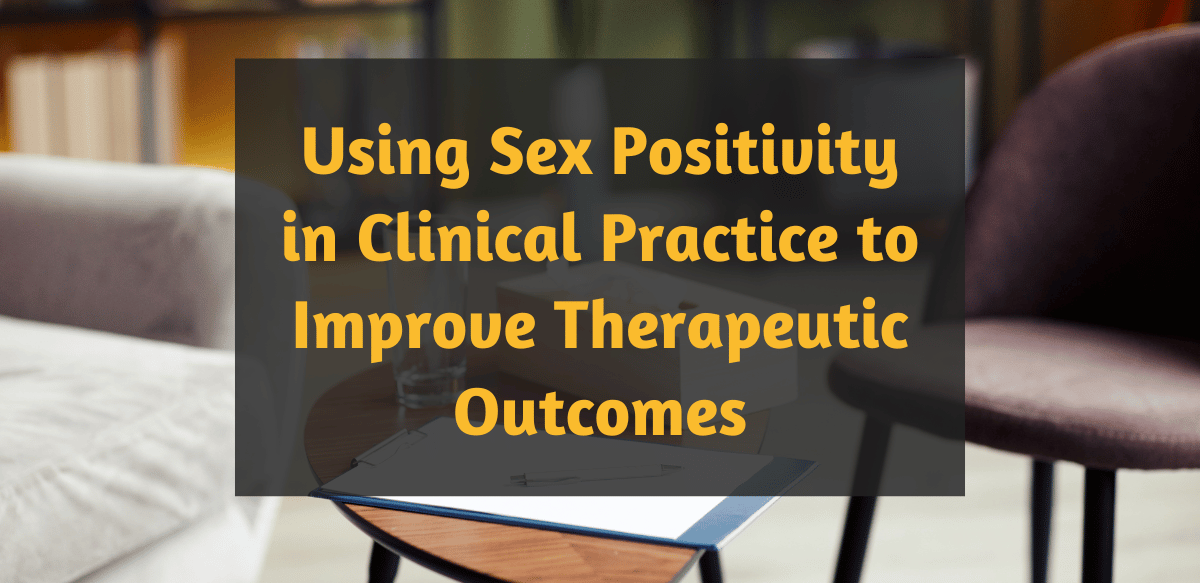
For decades, the treatment of people who have sexually offended operated from a predominantly risk-focused perspective. That is, telling clients what they should not do sexually, rather than helping clients use approach goals to develop healthy outlets for their natural human sexual needs. While risk management remains important, clinical experience suggests that adopting a sex-positive approach can enhance clients’ therapeutic outcomes and support their long-term rehabilitation.
Understanding the Effectiveness of Using Sex Positivity in Clinical Practice
Sex positivity in therapeutic settings is an approach that seeks to eliminate shame and judgment from discussions of sexual interests as well as from all forms of consensual, ethical sexual behavior. As Bud Ballinger—a clinical and forensic psychologist and the Director of Treatment Services for NYS Secure Treatment and Rehabilitation Center—explains during his Safer Society training, “How Sex Positivity Improves Sexual Offense-Specific Treatment,” this perspective recognizes that sexual health is an essential component of overall wellbeing. It affirms that people have the right to explore a wide range of sexual activities, provided there is full, affirmative consent from all involved parties.
It’s important to note that this approach does not advocate for unrestricted sexual behavior. Rather, it emphasizes that anything between consenting adults that doesn’t cause harm to themselves or others falls within the realm of healthy sexual expression. By shifting the focus away from moral judgments about what is “normal” and “right,” sex positivity encourages therapists to support clients in making informed choices about their sexuality.
Integrating Shame-Free Therapeutic Environments and Practical Sex-Positive Principles
Creating shame-free therapeutic environments is foundational to effective sex-positive clinical practice. Ballinger emphasizes that “shame has no therapeutic value” when working with sexual concerns. Instead, shame often drives problematic behaviors underground and prevents clients from seeking help when they need it most. Establishing an environment where clients can discuss their sexual interests openly is essential for effective treatment.
This means:
- Using person-first language rather than labels that define individuals by their worst behaviors.
- Distinguishing between sexual interests and sexual behaviors, emphasizing that interests themselves are not inherently problematic.
- Focusing on the ethical dimensions of sexual behavior, especially issues of consent and harm, rather than moral judgments.
- Recognizing that sexual health is best supported by openness, acceptance, and respect.
Ballinger also references the World Health Organization‘s definition of sexual wellness. According to this definition, sexual health requires “a positive and respectful approach to sexuality and sexual relationships, as well as the possibility of having pleasurable and safe sexual experiences free of coercion, discrimination, and violence.”
Implementing the sex-positive approach in clinical practice involves:
- Comprehensive assessment that explores both a client’s healthy and problematic sexual interests to gain an honest understanding of the client’s needs and concerns.
- Education and Communication drawing from the kink community principles about topics such as consent, communication, and healthy sexual practices
- Harm Reduction approaches that prioritize safety and wellbeing, acknowledging human sexual needs while working to minimize potential harms.
- Ongoing Professional Development that encourages self-reflection and fosters the courage to challenge outdated or judgmental practices.
As highlighted by the panelists in the Safer Society webinar, “Sex Positivity and Inclusivity: Transforming Treatment,” integrating these approaches improves therapeutic relationships and treatment outcomes. The benefits of moving toward a shame-free, sex-positive model make this an essential evolution in practice.
The insights shared in this post were drawn from:
- How Sex Positivity Improves Sexual Offense-Specific Treatment – Bud Ballinger’s training on implementing sex-positive approaches in clinical practice.
- Sex Positivity and Inclusivity: Transforming Treatment – A Safer Society webinar exploring how sex-positive approaches can improve treatment outcomes.
Professionals interested in developing their knowledge in the areas of sex positivity and sexual wellness can find the above learning opportunities in Safer Society’s On-Demand Library.
